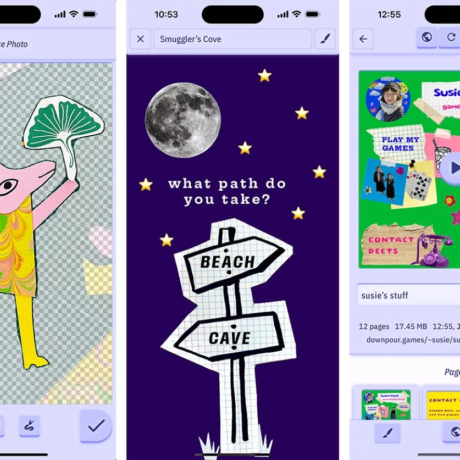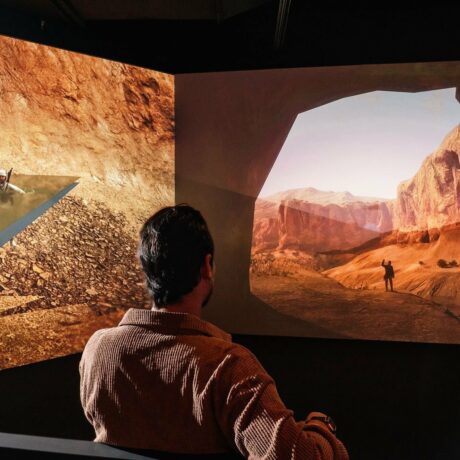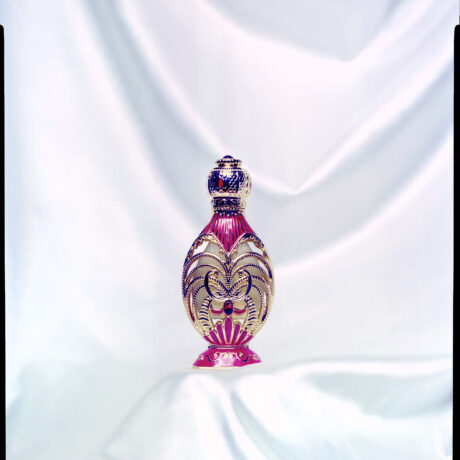I don’t go outside a lot. Sometimes I don’t want to, sometimes I can’t. Sometimes, I really, really want to leg it out the door to find somewhere else to live but chronic fatigue has grounded me for the foreseeable. And god, I wish I liked this house but my landlord has made some terrible choices that clearly have nothing to do with taste and everything to do with cost effectiveness. My Mum called the place antwacky when she first came to visit, and she was right. Between the mottled surfaces in the kitchen to the cat sick-coloured carpet, or the black wallpaper embossed with silver sunflowers in the already-dark room where I’m writing this text — all features I’d have to ask permission to change — I am aesthetically, politically and even professionally offended.
I say professionally offended because before Covid disabled me, I was an art critic and I ran a gallery. It was a handy pairing, with each roles feeding into the other, but curation is an incredibly physical job and I just couldn’t hack it anymore. I used to speed-walk across Liverpool to meet artists, funders, and source all the materials I needed to pull off a show. I ran a tight ship with new exhibitions every fortnight, so I never stopped. I was always up ladders to paint the walls, install work, angle spotlights, or whack the projector until it worked again. When I climbed back down, I’d heave tools and plinths, arrange chairs, clean the floor, photograph the show; and that was before the exhibition opening where I’d mill about with audiences before I got ready to do it all over again.
Curating was a joyful responsibility. Social, energising. I’d celebrate every time Arts Council England gave the city a few more months of programming. To be honest, I’d celebrate every time I pulled another show off. In losing the privilege, and after staying inside for so much time during the pandemic and then withdrawing into this landlordified home once I had gotten sick, I am able to see more clearly what curating really does. Because it isn’t so much about making a space nice, or even being very particular about the way a space is styled, as the word is so often used in general 2020s parlance. The real value and purpose of curation is in presenting audiences with other people’s ideas. Looking back on my time as a curator, I was essentially pressing reset on the exhibition space every two weeks in an attempt to continually serve my audience with perspectives that were new to them, and to me. It’s no wonder I found the role so energising. Each artist brought with them artwork that only they could have made, and in doing so, they expanded my mind and everybody else’s, because our conception of the world and what people do inside of it had grown. It left me with this sense that the more art I encountered, the more I could grow. And it’s a growth I suspect might well be infinite.
It’s for those exact reasons staying at home has spiritually drained me; and whilst I live under very specific circumstances with my disability, I’m sure many people recognise how stagnant life can get after experiencing the lockdowns of recent years. We tend to spend time with culture we are already familiar with, and it’s not as though there is a curator at home we can count on to show us something new, something that’s totally out of our hands and heads. If only my walls had their own exhibition programme! If only there was a reset button I could hit to refresh that exhibition whenever I needed that cultural exposure and the growth that comes with it! And anyway, I was sharing some of these thoughts online on the day I was due to go on a residency I had to cancel because my health had deteriorated and, you know, that silver embossed wallpaper was just really fucking getting to me — and I got a kind message from Photoworks, the charity and ‘only organisation with a national remit for photography in England.’ The message was asking if I wanted their Festival in a Box, and I am very grateful they got in touch.
Surprisingly heavy for a box not much bigger than A5, I had the festival on my lap over the covers on a day when I couldn’t do much else but lie in bed and feel — pain, nausea, culture. Inside, there was a stack of prints and paper. When I unfolded the first image, it was so big I couldn’t take it in until I had laid it out in front of me on the quilt, and then it was there: a window looking out — or down — onto a hot mine, bordered by glossy, dripping rock. It was an image by Felicity Hammond and it was huge and orange and blue and on my bed. Next, I opened up low-res lips blowing flames like cigarette smoke; the lips belonged to trans women, and the fire was collaged by Ebun Sodipo from burning police stations. I added it to my new patchwork quilt. I saw Britain through Johny Pitts’ eyes, read into gender with Mohamad Abdouni, and visited Latvia with Diana Tamane. There were 18 posters in total, and I lay covered in them. I kind of felt like I’d robbed a bank.
The festival’s title From Little Acorns… was inspired by Octavia Butler’s 1993 dystopian novel Parable of the Sower in which a teenage protagonist establishes her own community to protect people from the effects of climate change and inequality. Her community is called Acorn. The box contains essays about these themes, the artists in the line-up, with a grounding of art history. Although, the festival itself has a tangible forward momentum. From Little Acorns… references the proverb ‘mighty oaks grow from little acorns.’ I thought of the infinite growth to be found in art. The photography inside the box was acting like fertiliser; the box itself, or Photoworks’ organisation of the art, was like the stake in the soil next to a tree that supports its growth and helps keep it safe in heavy winds.
Publicly funded art is supposed to be for the public but I exist in the firing line of heavy winds, unpublicised with other sick people. I’m joined by carers, parents, people who live in remote places, and anybody who can’t afford tickets and travel to exhibitions, plays, live music, and so on. I wish there was a way for anybody whose freedom of movement is limited to request an artistic experience in the home. There’s currently no system in place to do so, and there should be because culture is too important to miss out on; culture like this, a whole Festival in a Box, makes me feel stimulated, less isolated, and even travelled. Post is a lifeline to me, and I think more arts organisations should use mail as a channel to meet audiences where they are.
But the festival is not just a stack of art and writing, and the reason I began this text with a discussion on curation is because the festival is also something to act upon and participate in. ‘Photoworks Festival 2022 contains the artwork of 10 contemporary artists. There is a wall label for each, giving you information about the artist and their work. Hang it as a group with friends, with fellow artists, classmates, or solo. Hang it now… and hang it again somewhere else in the future.’ Inside, I found one of the prints had the labels arranged along perforated lines, ready for anybody interested in curation to take Photoworks up on the offer.
Now, this is something I have not seen before — not in an industry obsessed with individualism, people’s names, and claiming the miraculous power of artistic genius. Photoworks writes that ‘The Festival in a Box aims to promote agency by relinquishing curatorial power, inviting the audience to become the curator.’ I felt so excited reading this. Having done this very job once upon a time, I have seen how curation — no matter how consciously or equitably I tried to run my gallery — is somebody standing up and saying hello everybody, listen to me, follow me, trust me; let me show you what I want to show you. It’s a powerful position to be in, buoyed by the funding that makes it possible, and here are Photoworks, attempting to share that power. This festival could provide the content and the curatorial framework for the very first show on somebody’s CV — or the latest.
For me, it offered something a little different. After I was done looking and reading and feeling, I climbed out of bed, grabbed some pins, and I covered the black wallpaper and all of its embossed silver sunflowers with an entire festival of work. I felt that refresh and reset, and then I went right back to bed.
Words by Gabrielle de la Puente of the White Pube.
Festival in a Box is £55 with a pre-recorded lecture. Institutions can purchase the kit for £255 with a live lecture for students
find out more




